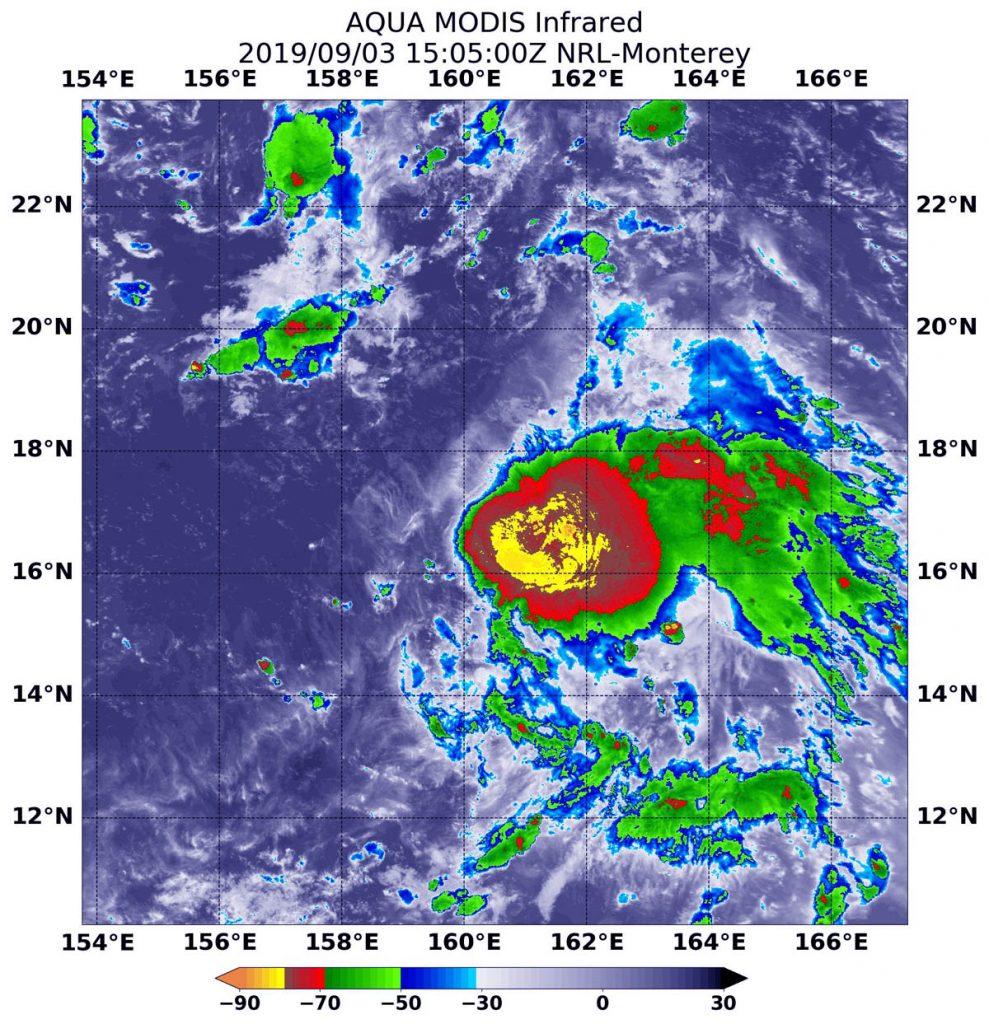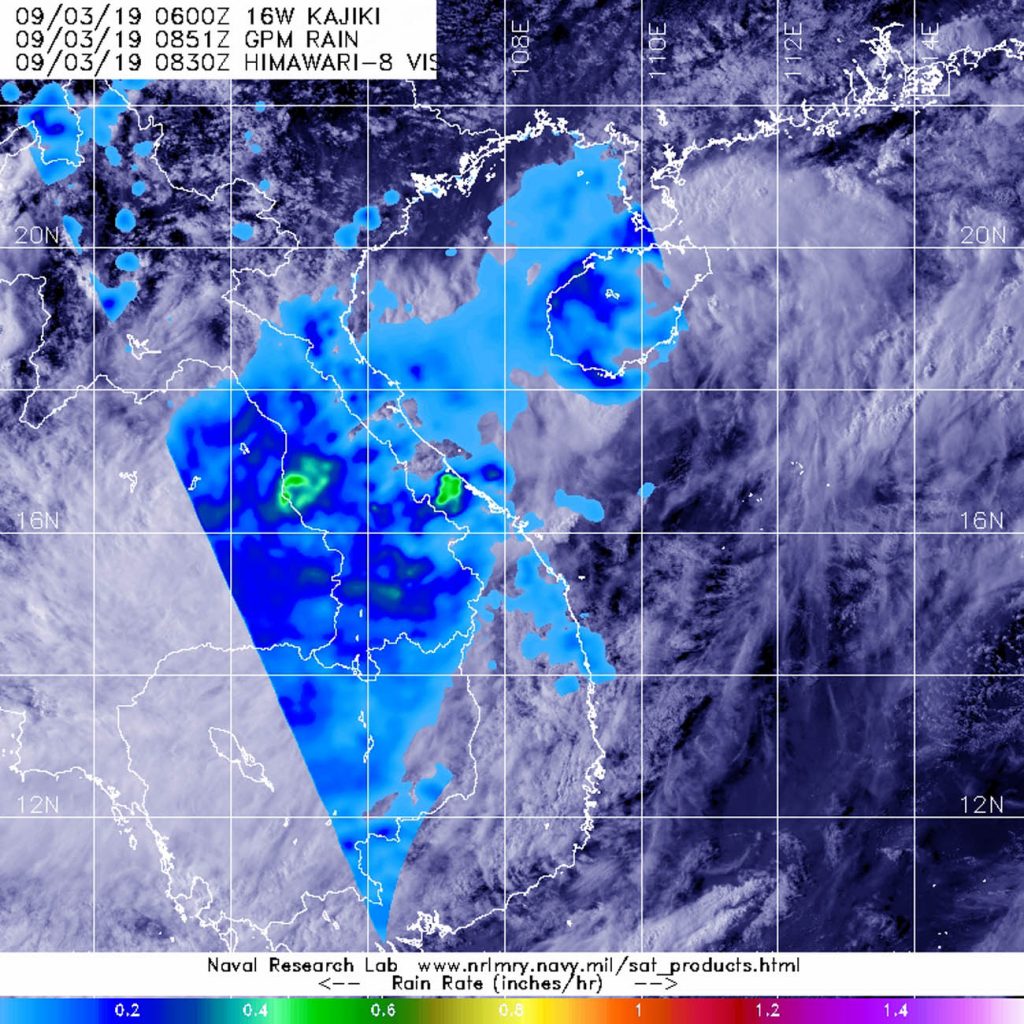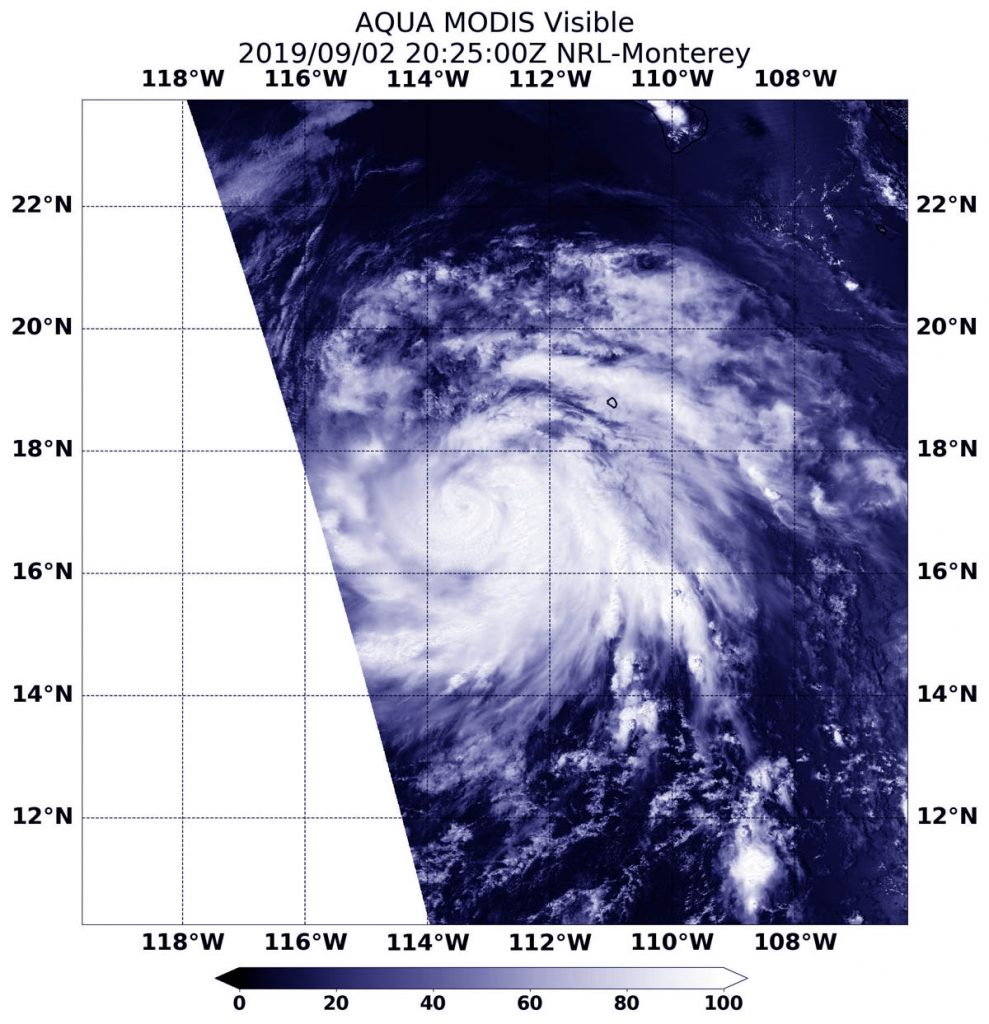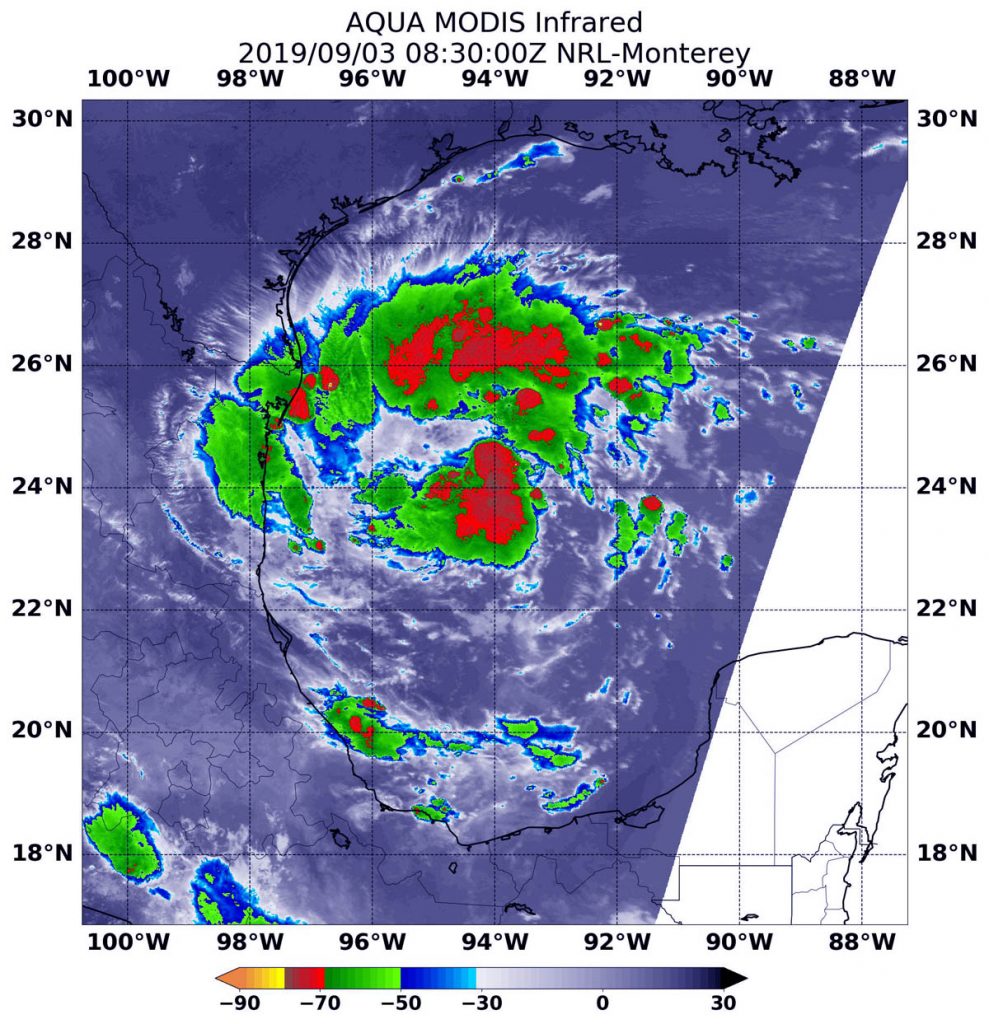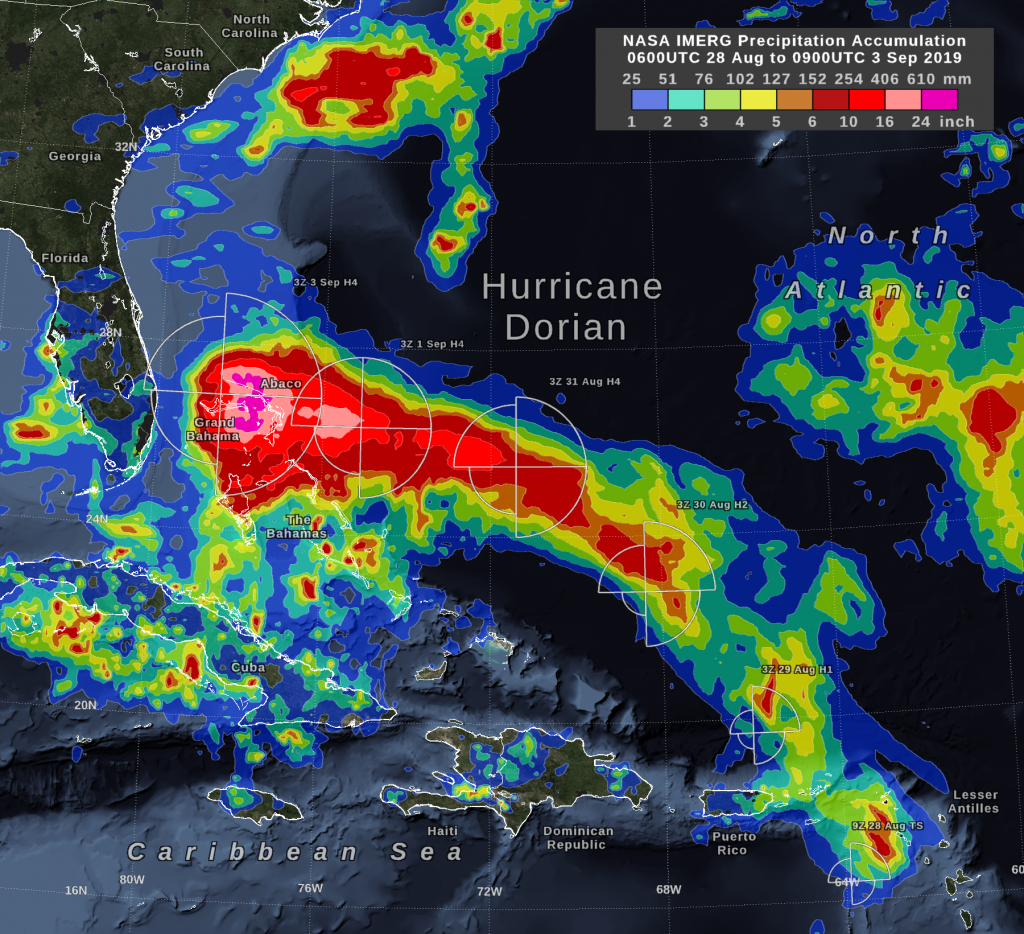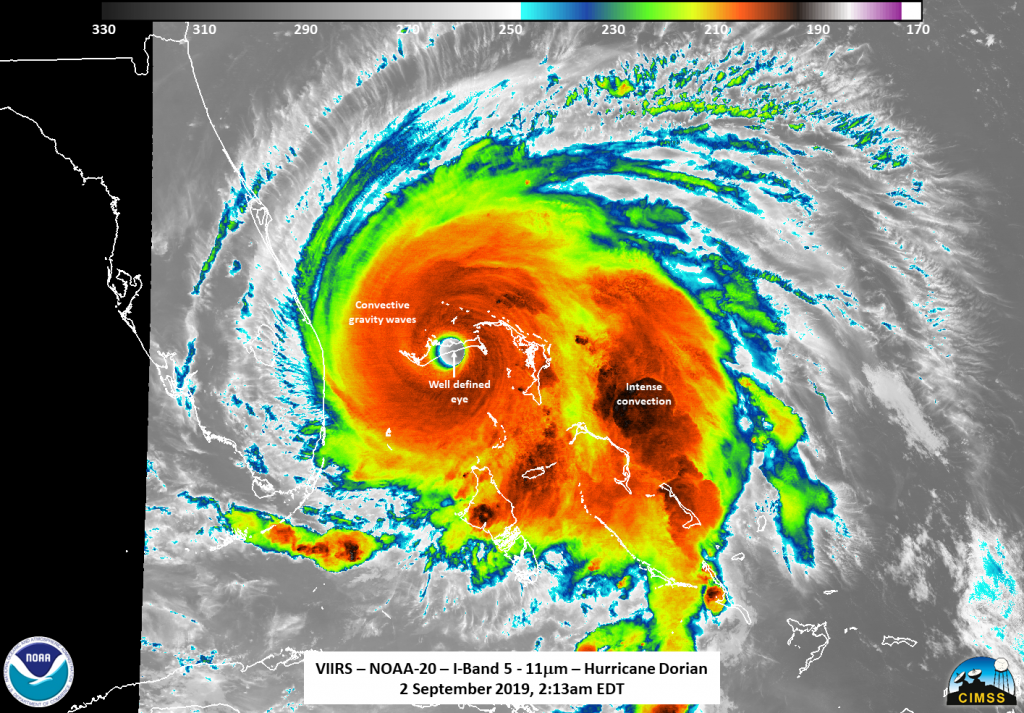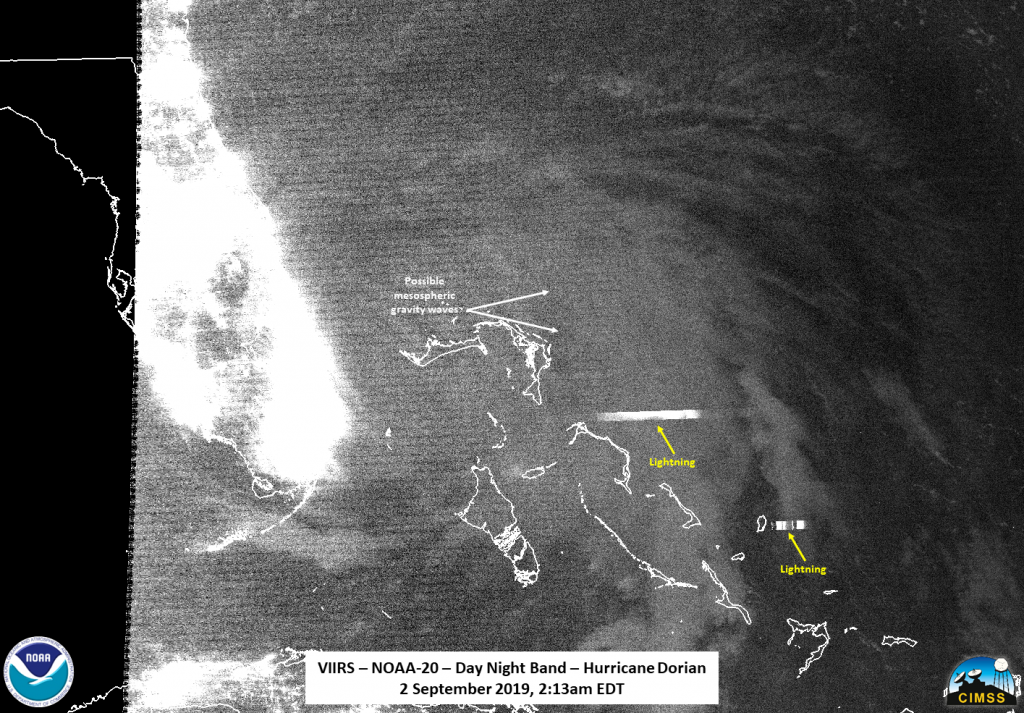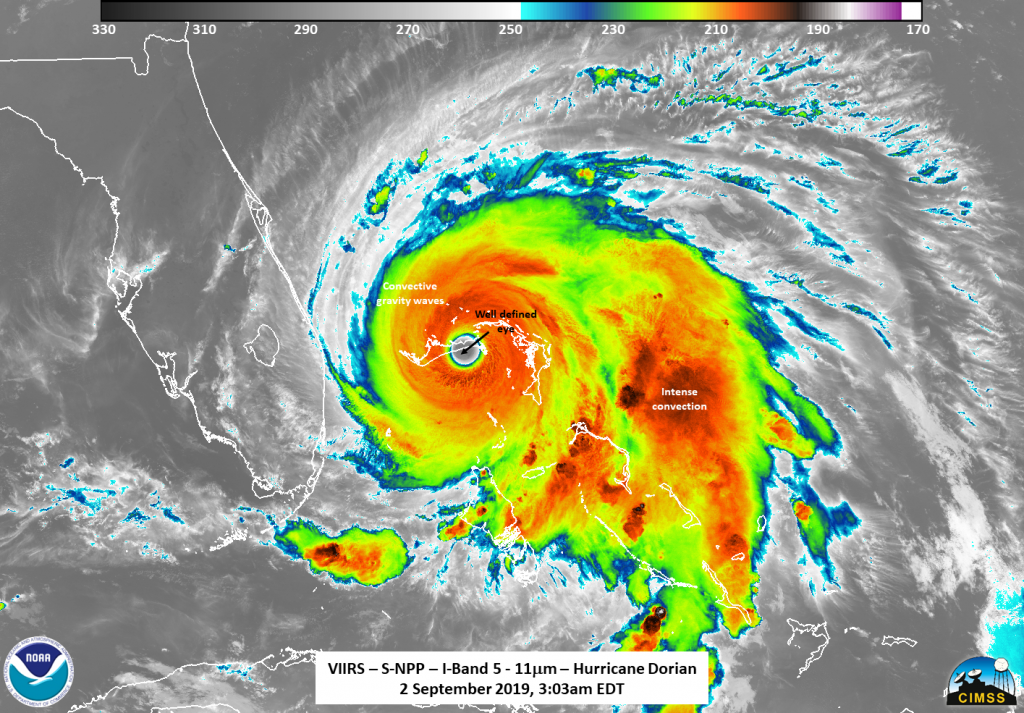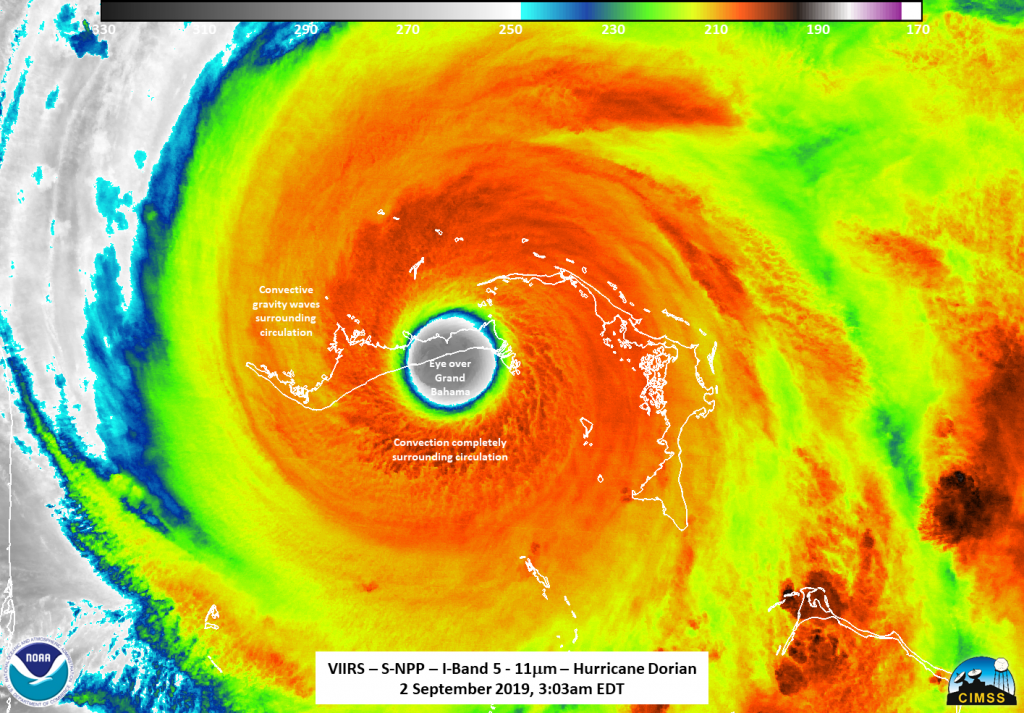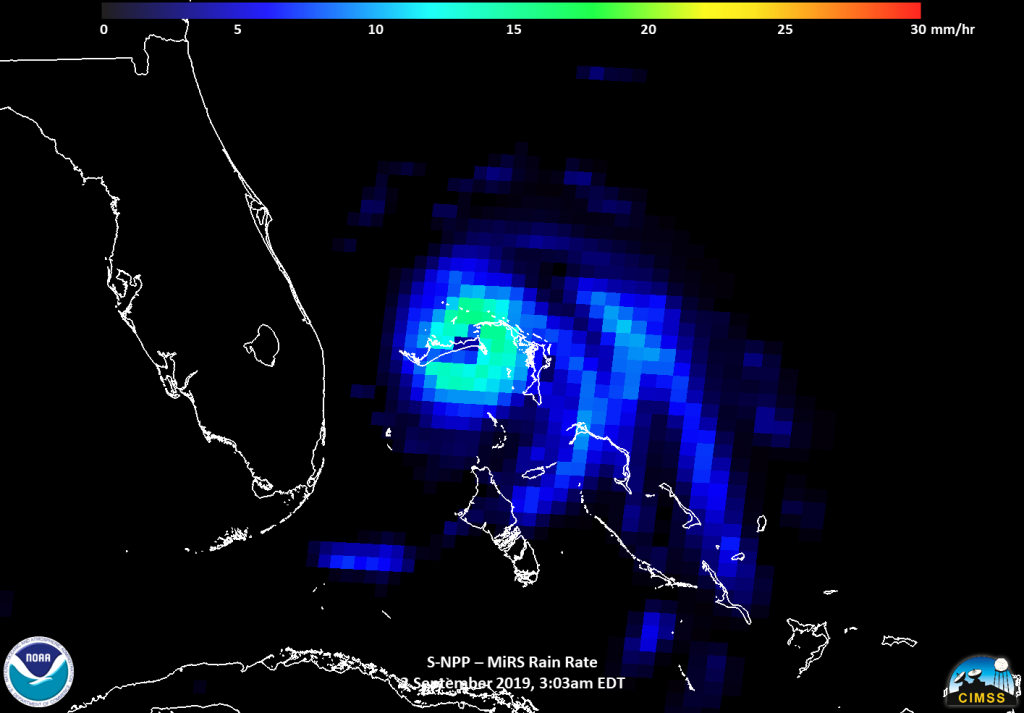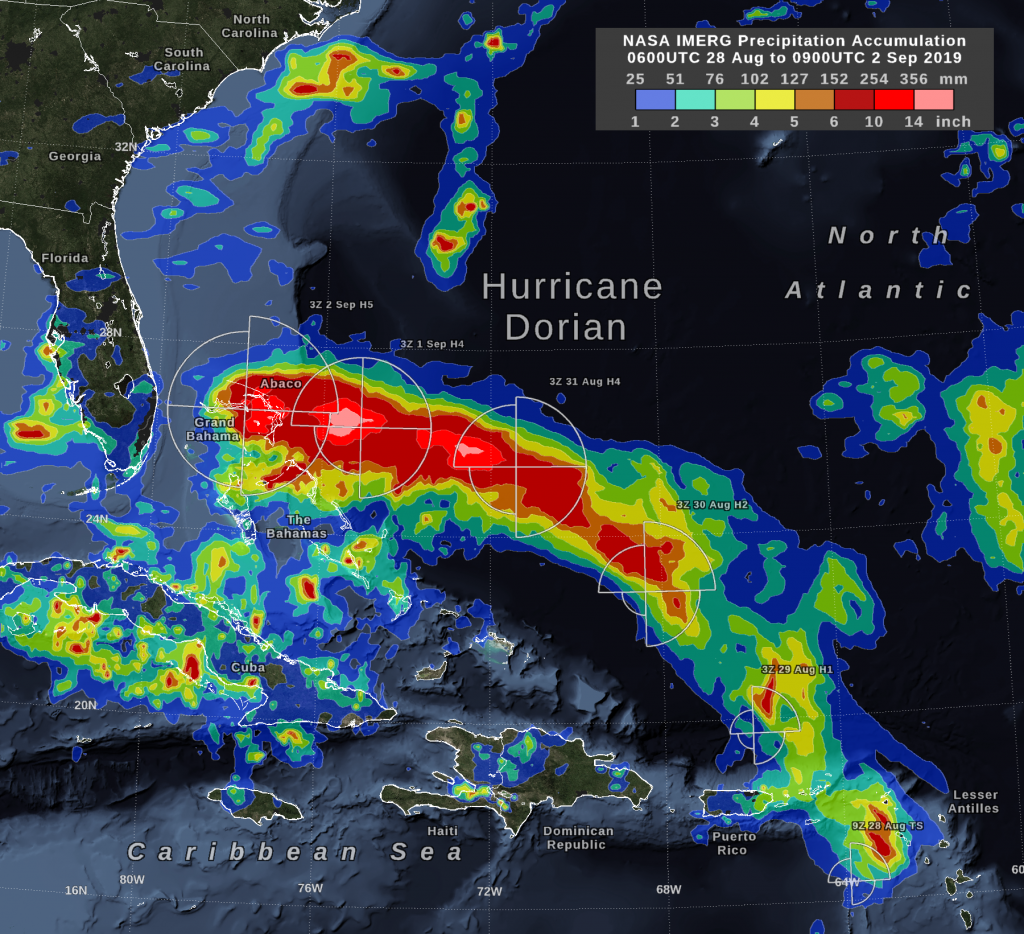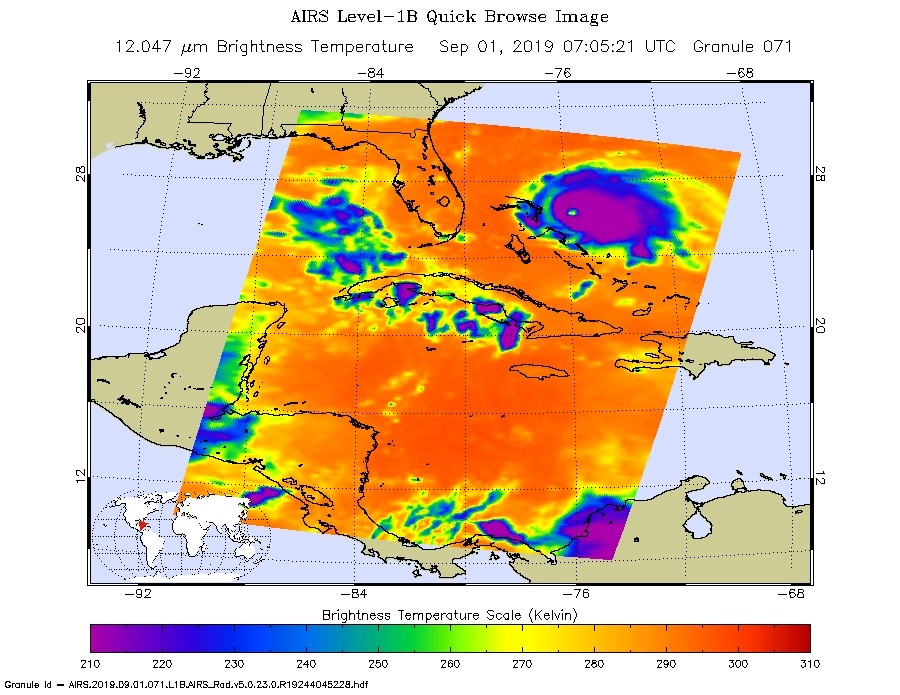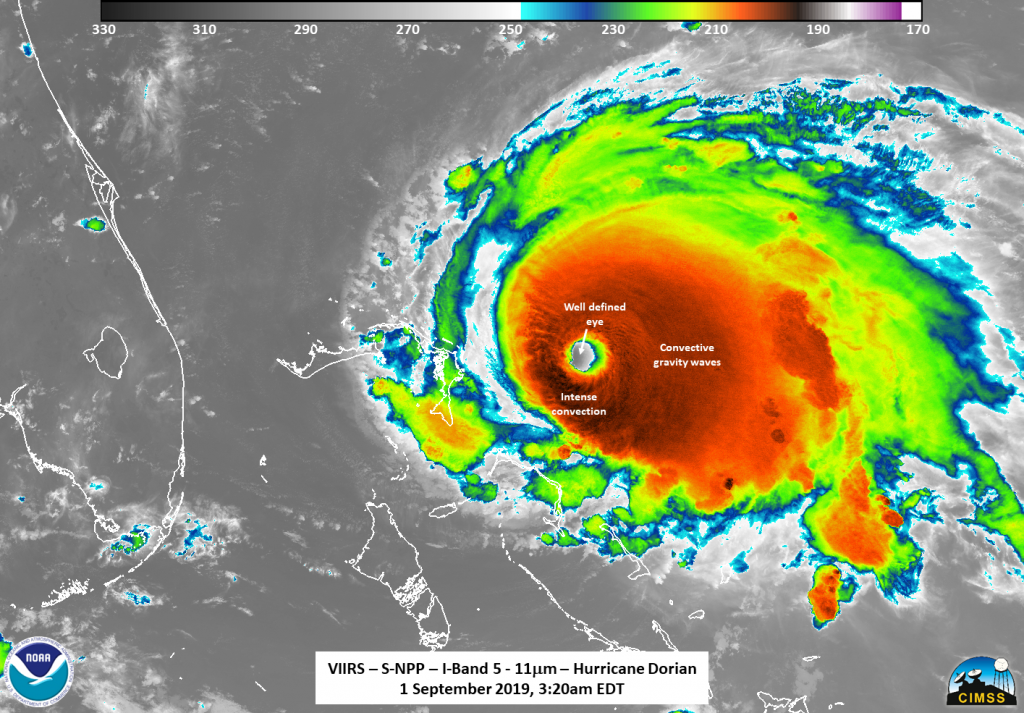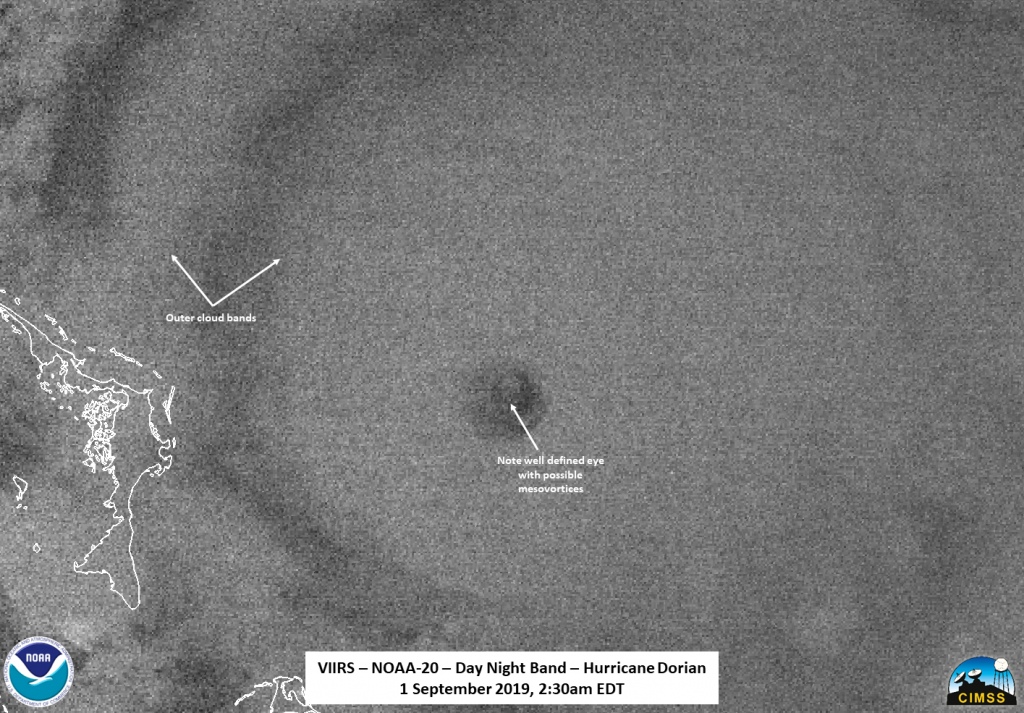Sep. 04, 2019 – NASA Analyzed Tropical Storm Fernand’s Strength Before Landfall
NASA’s Aqua satellite provided forecasters at the National Hurricane Center with infrared data and cloud top temperature information for Tropical Storm Fernand as it was making landfall in northeastern Mexico. Those temperatures indicated Fernand’s rainmaking capabilities. The infrared data also showed wind shear was affecting the storm.

NASA researches tropical cyclones and infrared data is one of the ways NASA uses. Cloud top temperatures provide information to forecasters about where the strongest storms are located within a tropical cyclone. The stronger the storms, the higher they extend into the troposphere, and they have the colder cloud temperatures.
NASA’s Aqua satellite analyzed the storm on Sept. 3, at 5:23 a.m. EDT (0923 UTC) using the Atmospheric Infrared Sounder or AIRS instrument. AIRS found coldest cloud top temperatures as cold as or colder than minus 63 degrees Fahrenheit (minus 53 degrees Celsius) around the center and in a thick band of thunderstorms over northeastern Mexico. NASA research has shown that cloud top temperatures that cold indicate strong storms that have the capability to create heavy rain.
That heavy rainfall potential is apparent in the warnings posted today. In northeastern Mexico, from Tamaulipas and Central/Southern Nuevo Leon, 6 to 12 inches of rain are possible with isolated 18 inches, highest along the immediate Gulf Coast and in the Sierra Madre Oriental. This rainfall may cause life-threatening flash floods and mudslides. Areas from Northern Nuevo Leon and Southern Coahuila can expect 3 to 6 inches. The south Texas and the lower Texas coast can also expect 2 to 4 inches, with isolated totals to 6 inches. In addition, a tornado or two are possible across far South Texas through this evening.
On Sept. 3, NOAA’s National Hurricane Center’s (NHC) discussion indicated that Fernand has been experiencing moderate easterly to southeasterly vertical wind shear and ingesting dry air in the southeastern semicircle. In general, wind shear is a measure of how the speed and direction of winds change with altitude.
That wind shear was indicated in the AIRS infrared imagery because the southeastern quadrant of Fernand appeared devoid of clouds. That’s an indication that outside winds from the east-southeast were pushing clouds and showers to the west-northwest of the center, where the AIRS imagery showed the bulk of clouds.
On Wednesday, September 4, 2019, a Tropical Storm Warning was in effect from Puerto Altamira to the Mouth of the Rio Grande River.
NHC noted at 8 a.m. EDT (1200 UTC), the center of Tropical Storm Fernand was located near latitude 23.5 North, longitude 97.2 West. Fernand is moving toward the west near 6 mph (9 kph). That puts the center of Fernand about 45 miles (70 km) southeast of La Pesca, Mexico. Maximum sustained winds are near 50 mph (85 kph) with higher gusts. Little change in strength is expected before the center moves onshore. The estimated minimum central pressure is 1000 millibars.
NHC said, “A motion toward the west or west-northwest is expected today, and the center of Fernand is forecast to cross the northeastern coast of Mexico later today or this evening. The cyclone is forecast to move inland over northeastern Mexico by this evening, and then dissipate quickly over the rugged terrain of the Sierra Madre Oriental mountains.”
For updated forecasts, visit: www.nhc.noaa.gov
For updated warnings from the Mexican Meteorological Service, visit: https://smn.conagua.gob.mx/es/

